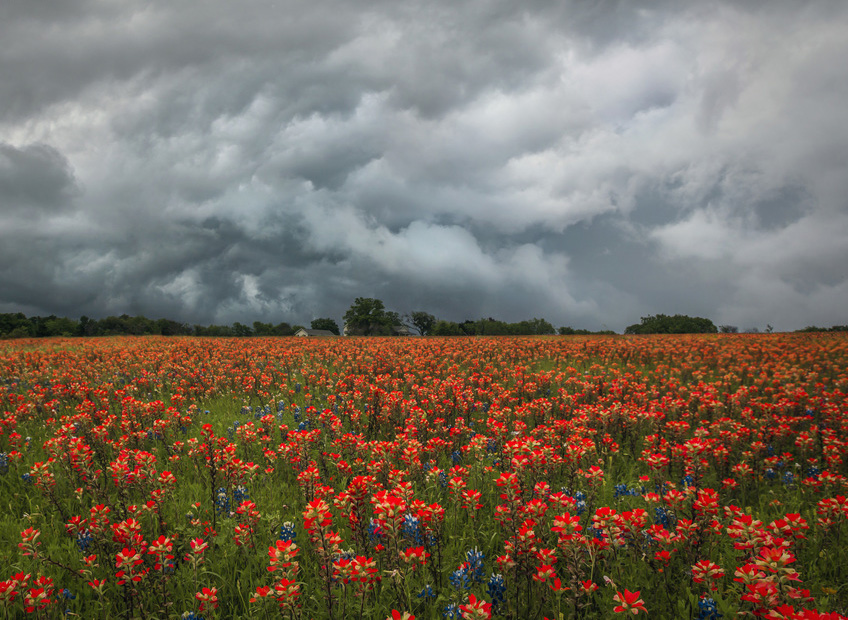 Photo: Jason Weingart
Photo: Jason Weingart
The three-month forecast from the National Oceanic and Atmospheric Administration calls for warmer than average temperatures for Central Texas. However, a strong cold front bringing a hard freeze to the area could be detrimental to some wildflower species. Thankfully, the forecast looks favorable.
Temperatures are forecast to be above average for the Texas Hill Country.
 Photo: NOAA
Photo: NOAA
Bluebonnets are resistant to cold. “When a cold snap happens, bluebonnets are rarely damaged,” said DeLong-Amaya. “But when we have warm spells as we have, and plants such as mountain laurels bloom, they are vulnerable to damage during a late hard freeze. We’ve had freezes in late March and early April, and if things are blooming by then, we can lose a lot of flowers for the season.”
Will Indian Paintbrush have a banner year like they did in 2016?
 Photo: Jason Weingart
Photo: Jason Weingart
Factors besides weather can also play a big part in how brilliant the wildflowers are in a given year. Bluebonnets tend to do best in locations that have been disturbed after they have dropped their seeds. While the seeds are often transported by water, activities such as grazing, gardening and mowing can also help them spread.
Bluebonnets are best not left alone.
 Photo: Jason Weingart
Photo: Jason Weingart
“Generally speaking, spring-blooming annual wildflowers are encouraged by grazing and mowing because the competition from perennials and grasses is knocked back,” DeLong-Amaya said. “A fire or flood, or even vigorous gardening, can open up space and make it more conducive to annual wildflowers.”



